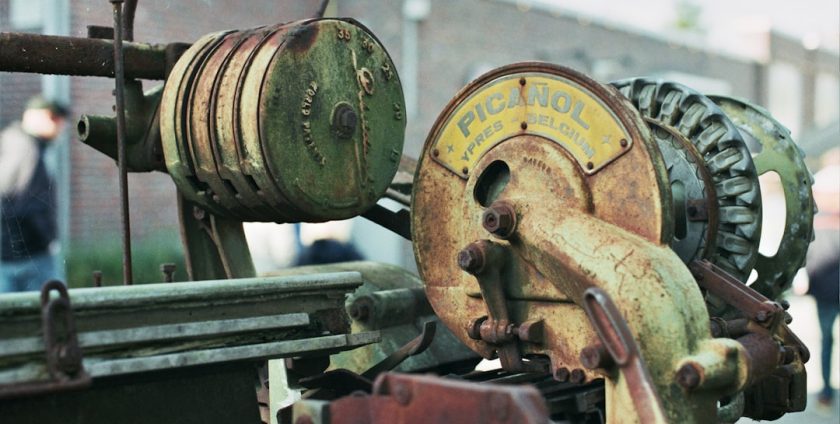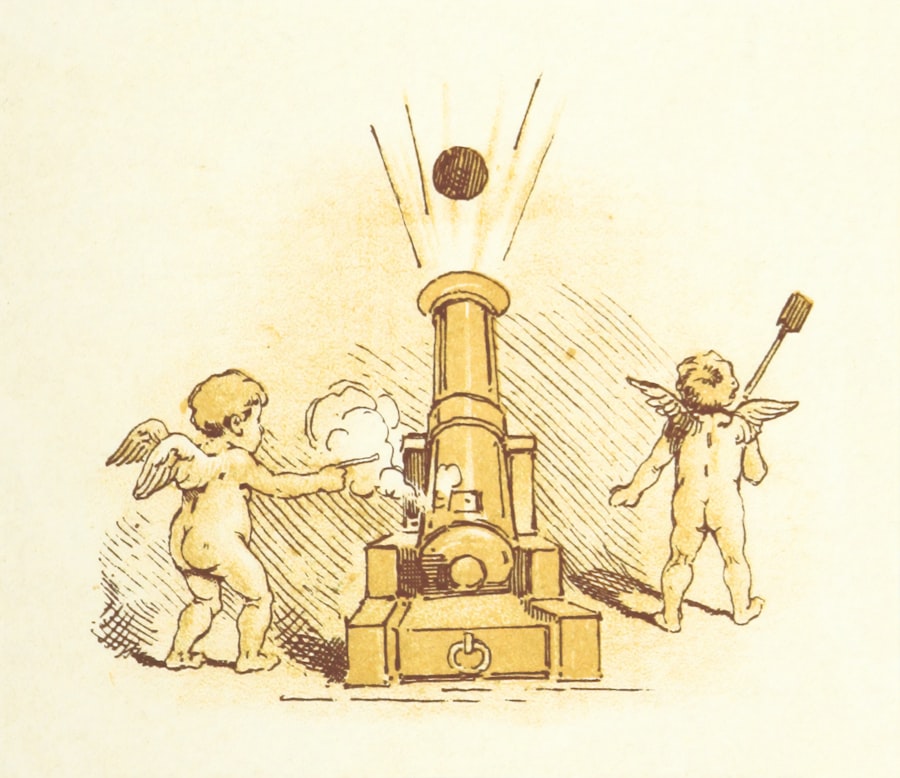
- By: admin
- Category: Commercial Floor Cleaning Machines
- 0 comment
In the bustling world of commercial spaces, first impressions are paramount. Whether it’s a retail store, an office building, or a healthcare facility, the cleanliness and appearance of floors can significantly influence how clients and customers perceive a business. Floor polishers play a crucial role in maintaining that pristine look.
They not only enhance the aesthetic appeal of a space but also contribute to the longevity of flooring materials. Regular polishing can protect floors from wear and tear, ensuring that they remain in excellent condition for years to come. Moreover, floor polishers are essential for maintaining hygiene standards in commercial environments.
In high-traffic areas, dirt and grime can accumulate quickly, leading to unsightly stains and potential health hazards. A well-maintained floor not only looks good but also promotes a healthier environment by reducing allergens and bacteria. For contract cleaners and facility managers, investing in quality floor polishers is not just about aesthetics; it’s about creating a safe and welcoming atmosphere for everyone who enters the space.
Summary
- Floor polishers are essential for maintaining a clean and professional appearance in commercial spaces
- Types of floor polishers for commercial use include rotary, orbital, and burnishers, each with unique features and benefits
- Factors to consider when choosing a floor polisher include size, power source, and the type of flooring in the commercial space
- Using floor polishers in commercial settings can improve the appearance of floors, extend their lifespan, and create a safer environment
- Achieving a high gloss shine on commercial floors requires the right floor polisher and proper technique
Types of Floor Polishers Available for Commercial Use
When it comes to floor polishers, there is a diverse range of options tailored to meet the specific needs of various commercial environments. One of the most common types is the rotary floor polisher, which uses a circular motion to buff and shine floors. These machines are versatile and can be used on different surfaces, including vinyl, tile, and hardwood.
Their ability to handle various cleaning pads makes them a favourite among contract cleaners who require flexibility in their operations. Another popular option is the orbital floor polisher, which employs a random orbital motion to achieve a high-gloss finish without leaving swirl marks. This type of polisher is particularly effective on delicate surfaces and is often preferred in settings like hotels or upscale retail stores where maintaining an impeccable appearance is crucial.
Additionally, there are automatic floor polishers that can operate independently, making them ideal for large commercial spaces where efficiency is key. Understanding the different types of floor polishers available allows facility managers to select the right equipment for their specific needs.
Factors to Consider When Choosing a Floor Polisher for Commercial Spaces

Selecting the right floor polisher for a commercial space involves several critical considerations. Firstly, the type of flooring in the facility plays a significant role in determining which polisher will be most effective. For instance, hard surfaces like concrete or tile may require more robust machines capable of handling heavy-duty tasks, while softer surfaces like carpet may necessitate gentler equipment.
Understanding the flooring material ensures that the chosen polisher will deliver optimal results without causing damage. Another important factor is the size of the area that needs polishing. Larger spaces may benefit from more powerful machines with wider cleaning paths to cover ground quickly and efficiently.
Conversely, smaller areas might require more compact models that can navigate tight corners and spaces easily. Additionally, considering the frequency of use is essential; if a facility requires daily polishing, investing in a durable and high-performance model will yield better long-term results than opting for a less expensive, lower-quality machine.
The Benefits of Using Floor Polishers in Commercial Settings
The advantages of using floor polishers in commercial settings extend beyond mere aesthetics. One of the primary benefits is the time-saving aspect; manual cleaning can be labor-intensive and time-consuming, whereas modern floor polishers streamline the process significantly. This efficiency allows cleaning staff to focus on other essential tasks while ensuring that floors remain spotless and well-maintained.
Furthermore, regular use of floor polishers can enhance safety within commercial spaces. Polished floors are less likely to accumulate dirt and grime, reducing the risk of slips and falls—a critical consideration in environments with high foot traffic.
In essence, investing in floor polishers not only elevates the appearance of a space but also contributes to a safer and more productive environment.
How to Properly Use a Floor Polisher for Commercial Shine
To achieve that coveted commercial shine, proper usage of a floor polisher is essential. Before starting, it’s crucial to prepare the area by removing any furniture or obstacles that could hinder the polishing process. Next, ensure that the floor is thoroughly cleaned to remove any dirt or debris that could scratch the surface during polishing.
This step is vital as it sets the foundation for achieving an even and lustrous finish. When operating the polisher, it’s important to follow the manufacturer’s instructions closely. Start with a lower speed setting to allow for better control and gradually increase as needed.
Move the machine in overlapping passes to ensure complete coverage without missing any spots. It’s also advisable to change pads regularly based on wear and tear; using worn-out pads can lead to subpar results. By adhering to these guidelines, facility managers can ensure that their floors not only shine but also maintain their integrity over time.
The Best Practices for Maintaining Floor Polishers in Commercial Spaces

Maintaining floor polishers is just as important as using them correctly. Regular maintenance ensures that these machines operate efficiently and have a longer lifespan. One of the best practices is to clean the polisher after each use; this includes removing any debris or dust from the pads and checking for any signs of wear or damage.
Neglecting this step can lead to decreased performance and potentially costly repairs down the line. Additionally, it’s wise to schedule routine inspections and servicing by professionals who can identify any underlying issues before they escalate. Keeping an eye on components such as belts, motors, and electrical connections can prevent unexpected breakdowns during critical cleaning times.
By implementing these maintenance practices, contract cleaners and facility managers can ensure their floor polishers remain reliable tools in their cleaning arsenal.
Common Mistakes to Avoid When Using Floor Polishers in Commercial Settings
While using floor polishers can seem straightforward, there are several common mistakes that users should be aware of to avoid subpar results or damage to floors. One frequent error is failing to test the polisher on a small, inconspicuous area before proceeding with full-scale polishing. This precaution helps identify any potential issues with compatibility between the machine and flooring material.
Another mistake is neglecting to adjust the speed settings according to the type of flooring being polished. Using too high a speed on softer surfaces can lead to scratches or damage, while too low a speed on harder surfaces may not yield the desired shine. Additionally, over-polishing can create an undesirable build-up of product on floors, leading to dullness rather than shine.
The Difference Between Buffing and Polishing Floors in Commercial Spaces
Understanding the distinction between buffing and polishing is essential for anyone involved in maintaining commercial floors. Buffing typically refers to the process of using a machine with a rotating pad to create a shine on floors without necessarily applying any additional products. This method is often used for routine maintenance to enhance existing shine and remove minor scuffs or scratches.
On the other hand, polishing involves applying specific products designed to enhance the surface’s gloss while also providing protection against wear and tear. This process usually requires more time and effort than buffing but results in a deeper shine and longer-lasting protection for floors. Knowing when to buff versus when to polish can help facility managers maintain their floors effectively while ensuring they look their best at all times.
How to Achieve a High Gloss Shine on Commercial Floors with the Right Floor Polisher
Achieving a high gloss shine on commercial floors requires not only the right equipment but also an understanding of techniques that maximise results. Start by selecting a high-quality floor polisher equipped with appropriate pads designed for achieving gloss finishes. For instance, using diamond pads can significantly enhance shine levels on hard surfaces like marble or concrete.
Before beginning the polishing process, ensure that floors are clean and free from any debris or residue that could interfere with achieving an even finish. It’s also beneficial to apply a suitable floor finish product before polishing; this creates a protective layer that enhances shine while safeguarding against future wear. By combining quality equipment with proper techniques, facility managers can ensure their commercial spaces radiate professionalism through gleaming floors.
The Environmental Impact of Using Floor Polishers in Commercial Settings
As businesses increasingly prioritise sustainability, understanding the environmental impact of using floor polishers becomes essential. Many traditional cleaning products contain harsh chemicals that can be harmful not only to users but also to the environment when washed down drains or disposed of improperly. However, there are now eco-friendly alternatives available that provide effective cleaning without compromising environmental integrity.
Additionally, energy-efficient floor polishers are designed to consume less power while delivering optimal performance. By choosing machines that adhere to energy-saving standards, businesses can reduce their carbon footprint while still maintaining high cleanliness standards in their facilities. Embracing environmentally friendly practices not only benefits the planet but also enhances a company’s reputation among eco-conscious clients.
Tips for Choosing the Right Floor Polisher Supplier for Commercial Use
Selecting the right supplier for floor polishers is crucial for ensuring quality equipment and reliable service. Start by researching suppliers with a solid reputation within the industry; reading reviews from other commercial clients can provide valuable insights into their reliability and customer service standards. It’s also wise to consider suppliers who offer comprehensive support services such as training on equipment usage and maintenance tips.
A supplier who provides ongoing support demonstrates commitment beyond just selling products; they become partners in helping businesses maintain their facilities effectively. By taking these factors into account when choosing a supplier, facility managers can ensure they have access to quality equipment backed by exceptional service—an investment that pays off in maintaining pristine commercial spaces for years to come.
FAQs
What are floor polishers used for?
Floor polishers are used to maintain and enhance the appearance of hard floors in commercial settings. They are designed to remove dirt, scuff marks, and scratches, while also adding a protective layer of polish to create a shiny and professional finish.
How do floor polishers work?
Floor polishers work by using rotating brushes or pads to scrub and polish the surface of the floor. They may also dispense polish or cleaning solution to further enhance the cleaning process. Some models also have a vacuum function to remove any debris or excess polish.
What types of floors can floor polishers be used on?
Floor polishers can be used on a variety of hard floor surfaces, including vinyl, linoleum, laminate, hardwood, and tile. It is important to check the manufacturer’s guidelines to ensure that the specific floor polisher is suitable for the type of flooring being treated.
What are the benefits of using a floor polisher in a commercial setting?
Using a floor polisher in a commercial setting can help to maintain a clean and professional appearance, improve safety by removing slip hazards, extend the lifespan of the flooring, and create a more hygienic environment by removing dirt and bacteria from the floor surface.
How often should floor polishing be done in a commercial setting?
The frequency of floor polishing in a commercial setting will depend on factors such as foot traffic, the type of flooring, and the level of maintenance required. Generally, high-traffic areas may need to be polished more frequently, while lower-traffic areas may require less frequent polishing. It is important to follow the manufacturer’s recommendations and establish a regular maintenance schedule.
